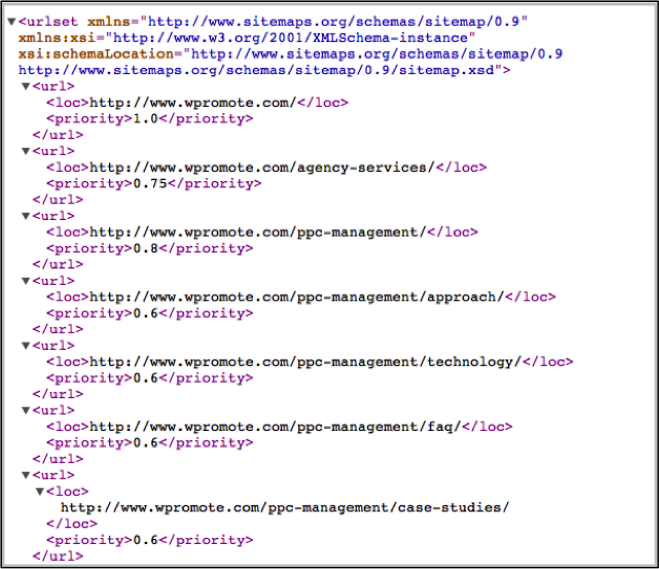While an HTML sitemap primarily aids users with site navigation, XML sitemaps aid your site where the search engines are concerned. An XML sitemap is a digital list or file of all the pages on your website that a user can access. Its main purpose is to tell search engines about every page available on your website. Additionally, XML sitemaps:
- Tell search engines which pages are most important
- Let search engines crawl your website more efficiently
- Show search engines how frequently your site is updated
- And, overall, improve your visibility to the search engines

Unknown Websites
Until a blog or a site becomes well established, the search engines might not find all of your posts or pages naturally. Having good user engagement, SEO, and backlinks can help bring your posts and pages to the search engines’ attention. Until then, an XML sitemap is your saving grace. An XML sitemap allows search engines the opportunity to see all content a website has to offer, thus all your content can be crawled by search engines and become indexed, making it rankable.
Established Websites
If your blog or site is already well known, then an XML sitemap assists you by letting you interact with search engines more effectually. As mentioned, in addition to telling search engines all the pages you have, XML sitemaps let you assign priority to pages so search engines know which are most important to view and display.
Different priority levels will not make or break any page on your site, or your overall site navigation. So there is no extreme pressure with how you assign page importance. However, as a general rule of thumb, your homepage should be labeled with 1.0 priority and then your other main pages should be given 0.8 or 0.9 priority with the numbers decreasing from there. For example, for an ophthalmologist priority could be assigned as follows:
- Homepage – 1.0
- Eye Treatments – 0.9
- LASIK Surgery – 0.8
- LASIK Consultation – 0.6
- LASIK Blog – 0.5
- Old LASIK Promo Event – 0.1
More Metadata
Past priority, the metadata on your XML sitemap tells search engines the last time a page was updated, and how often pages are changed. You can also use your XML sitemap as a way to provide search engines with info on specific types of content featured on your webpages, like images and videos. With an image, for instance, you can include the license of the photo and the subject matter. Meanwhile, for a video you can describe the category, age appropriateness rating, and running time.
A Map To Site Success
Adding an XML sitemap does not directly affect your search rankings. However, it does let search engines know about all the pages your site has to offer and provides valuable information about those pages. Namely—an XML sitemap is an opportunity to use metadata to instruct search engines how to index your pages properly. If you want all aspects of your website to be viewed and crawled correctly by search engines, be sure your site has an XML sitemap where all your webpages are represented. It is an SEO best practice that should not be overlooked!







Responses